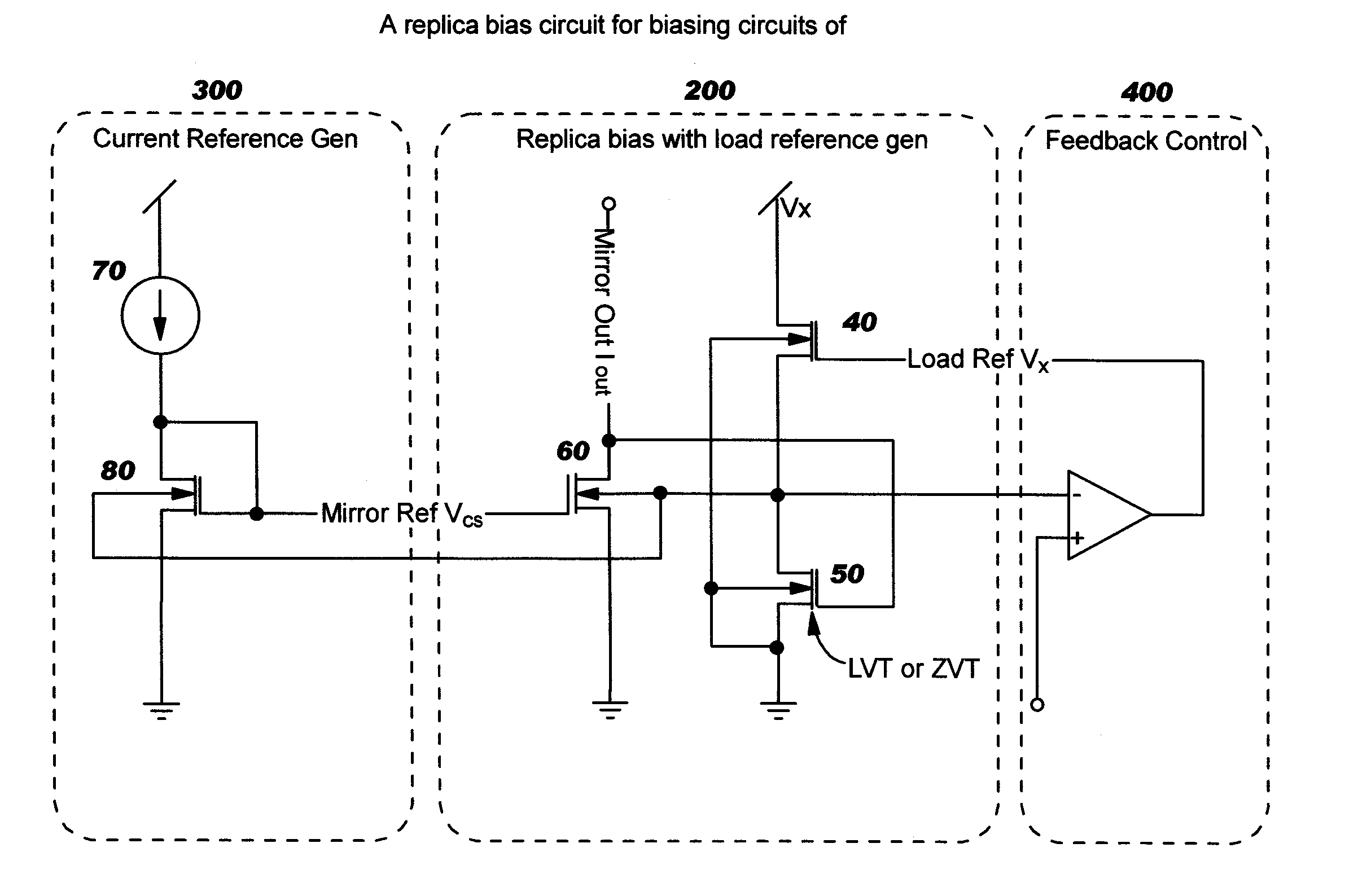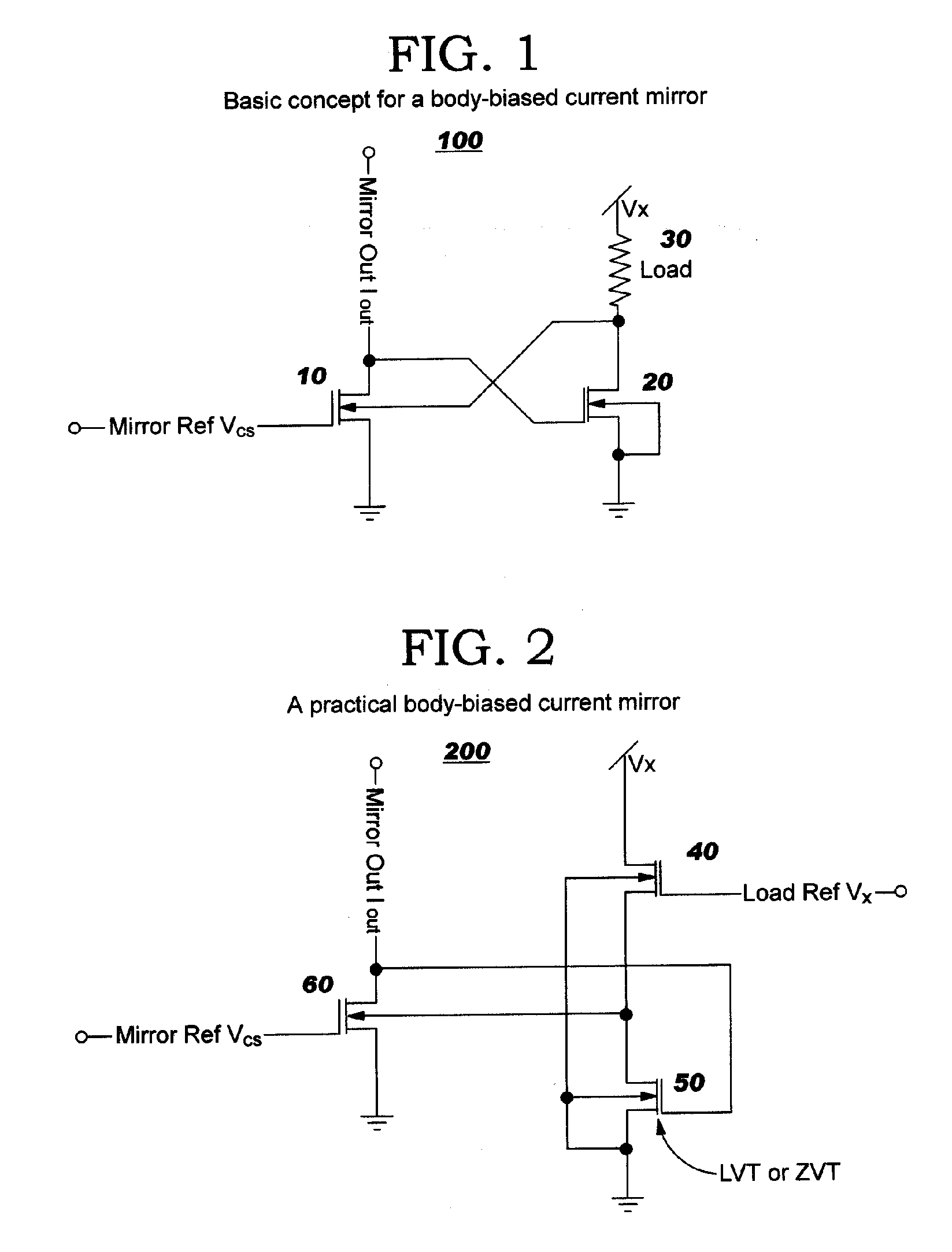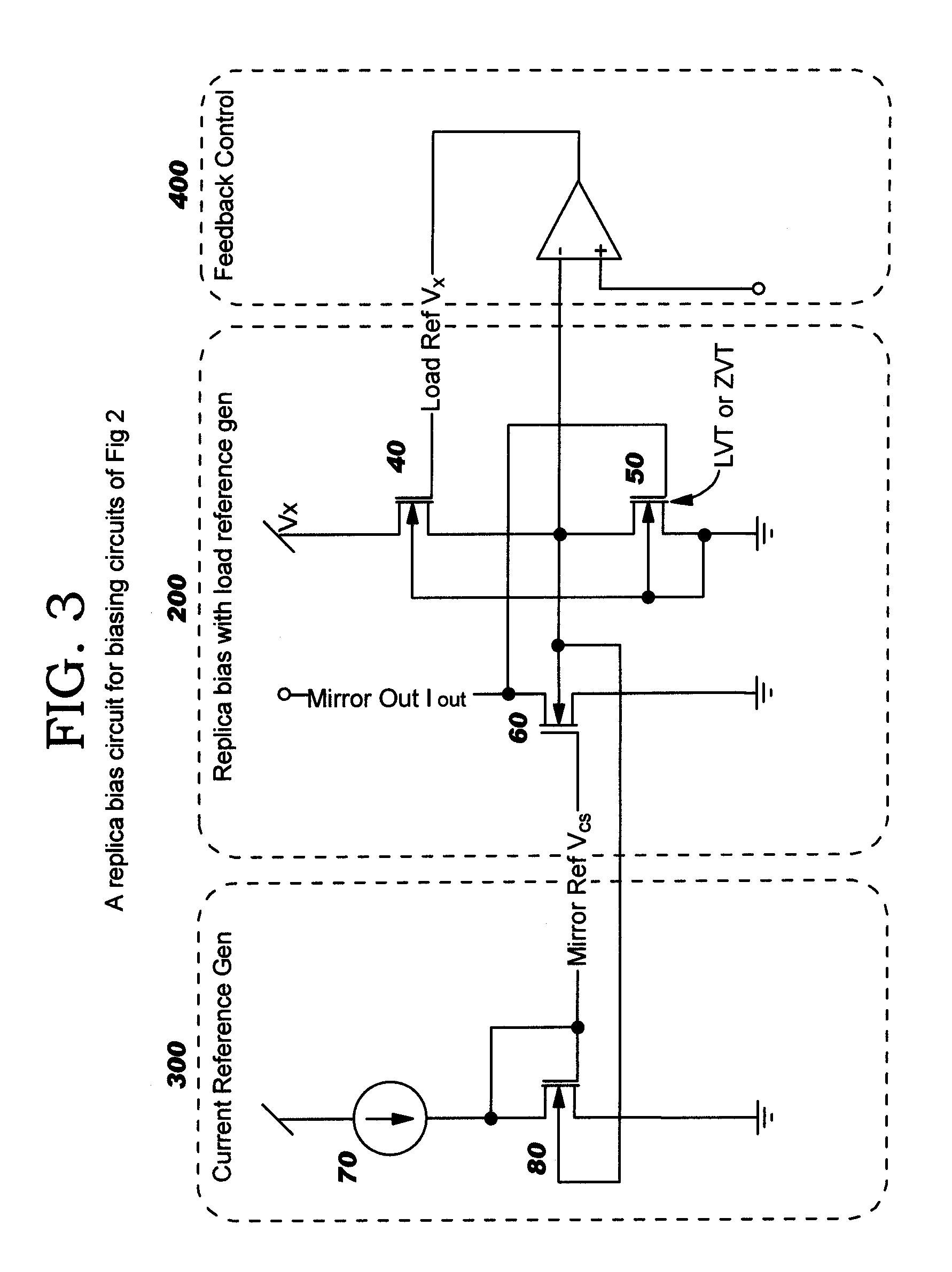Body-biased enhanced precision current mirror
a current mirror and body bias technology, applied in the field of current reference integrated circuits, can solve the problems of mos transistors being imperfect current sources, limited to low current applications, and mos transistors offering a wide dynamic range, so as to increase the output impedance of mos current sources without significant penalty in circuit area or additional margin in operating voltage. , the effect of increasing the output impedance of mos current sources
- Summary
- Abstract
- Description
- Claims
- Application Information
AI Technical Summary
Benefits of technology
Problems solved by technology
Method used
Image
Examples
first embodiment
[0021] Referring to FIG. 1, a body-biased current mirror 100 is shown. The drain voltage of NFET current mirror device 10 is monitored by NFET amplifier 20. If the drain voltage of NFET current mirror device 10 increases, the monitor NFET amplifier 20 pulls down on the body of NFET current mirror device 10 and the tendency of the mirror current to increase is counteracted by the resultant increase in the threshold voltage of NFET current mirror device 10. This increases the apparent output impedance of NFET current mirror device 10.
[0022] As shown in FIG. 1, resistor 30 is a load element for the body feedback amplifier 20 that is tied to power supply, Vx. While this circuit topology is conceptually feasible, it has a number of disadvantages, such as requiring significantly increased area and additional processing steps to implement the load as a resistor. In addition, the wire biasing the body feedback amplifier to the supply voltage, Vx has to carry whatever current flows through ...
second embodiment
[0023] A smaller and therefore more practical implementation for the current mirror is shown in FIG. 2. In this second embodiment, the load element is represented by MOS load transistor 40 with its gate tied to a reference potential, Vx. Although this circuit operates in the same way as the circuit shown in FIG. 1, the MOS transistor provides a more efficient layout together with more easily controlled design parameters. Another difference is that NFET body feedback amplifier 50 is a low-threshold or zero-threshold transistor, which will turn on in response to very low voltages at the drain of NFET current mirror device 60. As such, the voltage requirement for the mirror is not increased to accommodate the body bias network.
[0024] A circuit for generating the reference voltage Vx is now disclosed. Since the reference voltage may be commonly applied across a large number of current mirror instances, the circuit used to generate this voltage can be somewhat more complex without adding...
third embodiment
[0028] Referring to FIGS. 5-7, a schematic and a set of simulations according to the body-biased enhanced current mirror are shown. In FIG. 5, a second current mirror instance 500 is coupled in parallel to the circuit of FIG. 3. The output current of NFET current mirror device 60 can be made to be decreasing monotonic over the range of interest of its drain voltage by varying the size of the transistors in the mirror reference voltage feedback path. By changing the aspect ratios, and hence the gain in the feedback path, of some of the transistors, the non-monotonic response of the current output may be emphasized or inhibited. More importantly, the non-monotonic behavior of the circuit can be controlled through transistor sizing, so that an optimal response is realized for the body-biased enhanced current mirror.
[0029]FIG. 5 shows a body-biased enhanced current mirror circuit schematic according to a third embodiment, wherein an auxiliary NFET current mirror device 115 is added with...
PUM
 Login to View More
Login to View More Abstract
Description
Claims
Application Information
 Login to View More
Login to View More - R&D
- Intellectual Property
- Life Sciences
- Materials
- Tech Scout
- Unparalleled Data Quality
- Higher Quality Content
- 60% Fewer Hallucinations
Browse by: Latest US Patents, China's latest patents, Technical Efficacy Thesaurus, Application Domain, Technology Topic, Popular Technical Reports.
© 2025 PatSnap. All rights reserved.Legal|Privacy policy|Modern Slavery Act Transparency Statement|Sitemap|About US| Contact US: help@patsnap.com



